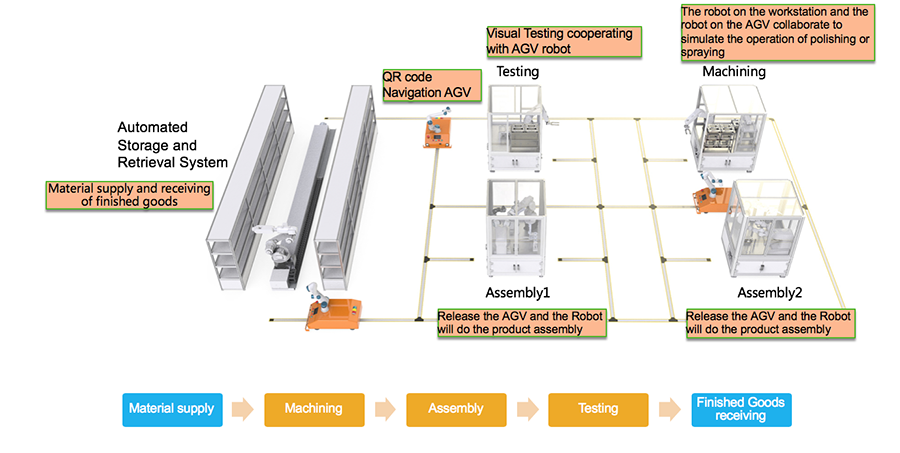
Enabling "Extreme Manufacturing" Page 3.
Robots in Manufacturing: Enterprise View
Conclusions and Future Work
We are currently working on new approaches to further open up the platform to new ways on how to even further enhance the flexibility of the system architecture when it comes to integrating new robot hardware.
In the current setup, we still rely on one-off integrations to robotics systems (as we have done in the above mentioned showcase), but what if we want to change the underlying robot hardware due to changing requirements and/or technology upgrades?
For that reason, we are currently working on a robotics services framework that allows to create another abstraction layer between robot hardware and the connected SAP systems, which include an integration with the up and coming field of Cloud Robotics, that is currently being developed in collaboration with the Google Cloud Robotics team.
In SAP’s IoT Startup Accelerator we work on a day-to-day basis with cutting edge technology provided by international top-performing startup companies to make this an integral part of an innovative, smart manufacturing endeavor. For instance, we recently engaged in an integration with two startups in the area of accessibility for factory workers, and together have built a solution that allows people with certain disabilities to continue their work on the manufacturing floor by providing them alternative access options with the startups “Kinemic” and “4tiitoo”.
More information can be found at https://www.youtube.com/watch?v=zKfJnSQjGfA.
In the future, we will see more and more applications of those highly flexible integration scenarios, which opens up the world of automation to applications, for which automation would have been infeasible to consider.
Through the highly customizable, end-to-end automation and its integration into the entire business process, we can not only optimize the manufacturing process itself, but also track what is being manufactured, how much, and when. We can further link raw materials to product in a fully automated way, so that we can easily determine, how many pieces we can produce from how much raw material.
In the new setup, dynamic, business decisions can be handled and supported in an ad-hoc manner due to the highly-flexible architecture of the integrated system.
For instance, if a high priority order comes in, this special request can be handled without disrupting an already running manufacturing process and given highest priority to be produced immediately.
As a result, everyone will benefit from this new development: the manufacturing company, because it has a fully, end-to-end, automated business and manufacturing flow, that enables a much more efficient and thus more cost-effective way of producing fully customizable products, and the customers, because they are able to receive fully-customized product for less.
Fig. 3: Matrix Layout enabling flexible production processes

Contact
Dr. Asuman Sünbül, IoT Startup Accelerator, 3412 Hillview Avenue, Palo Alto, CA 94304 asuman.suenbuel@sap.com
